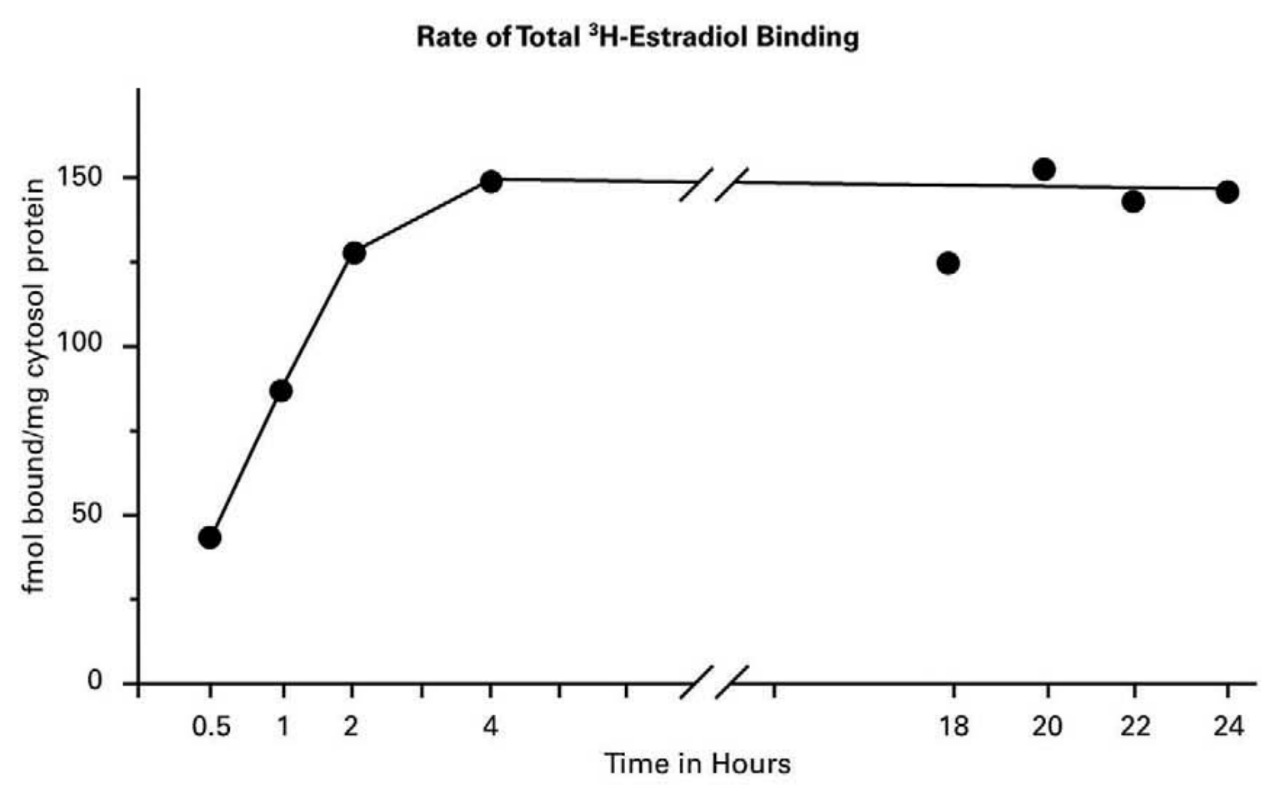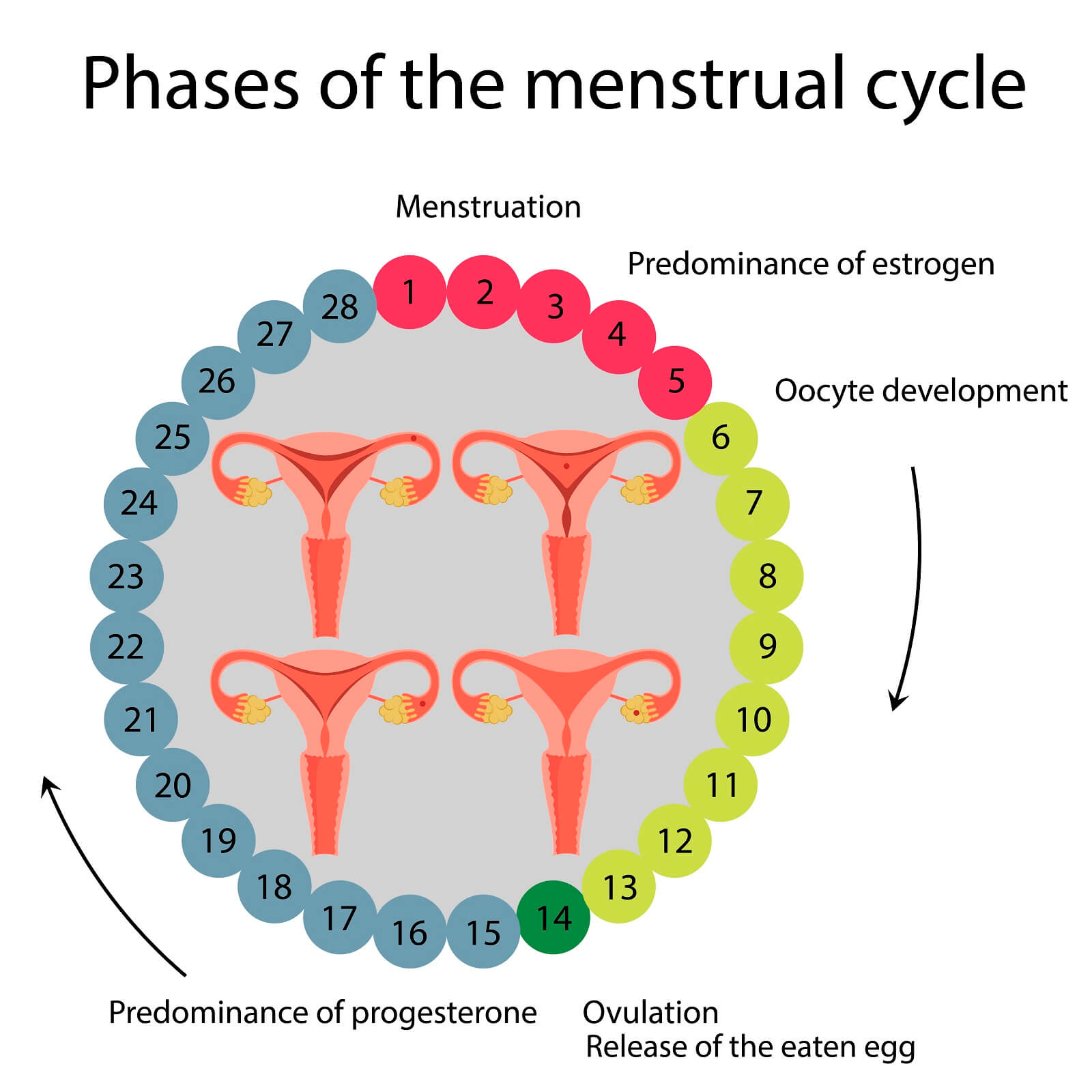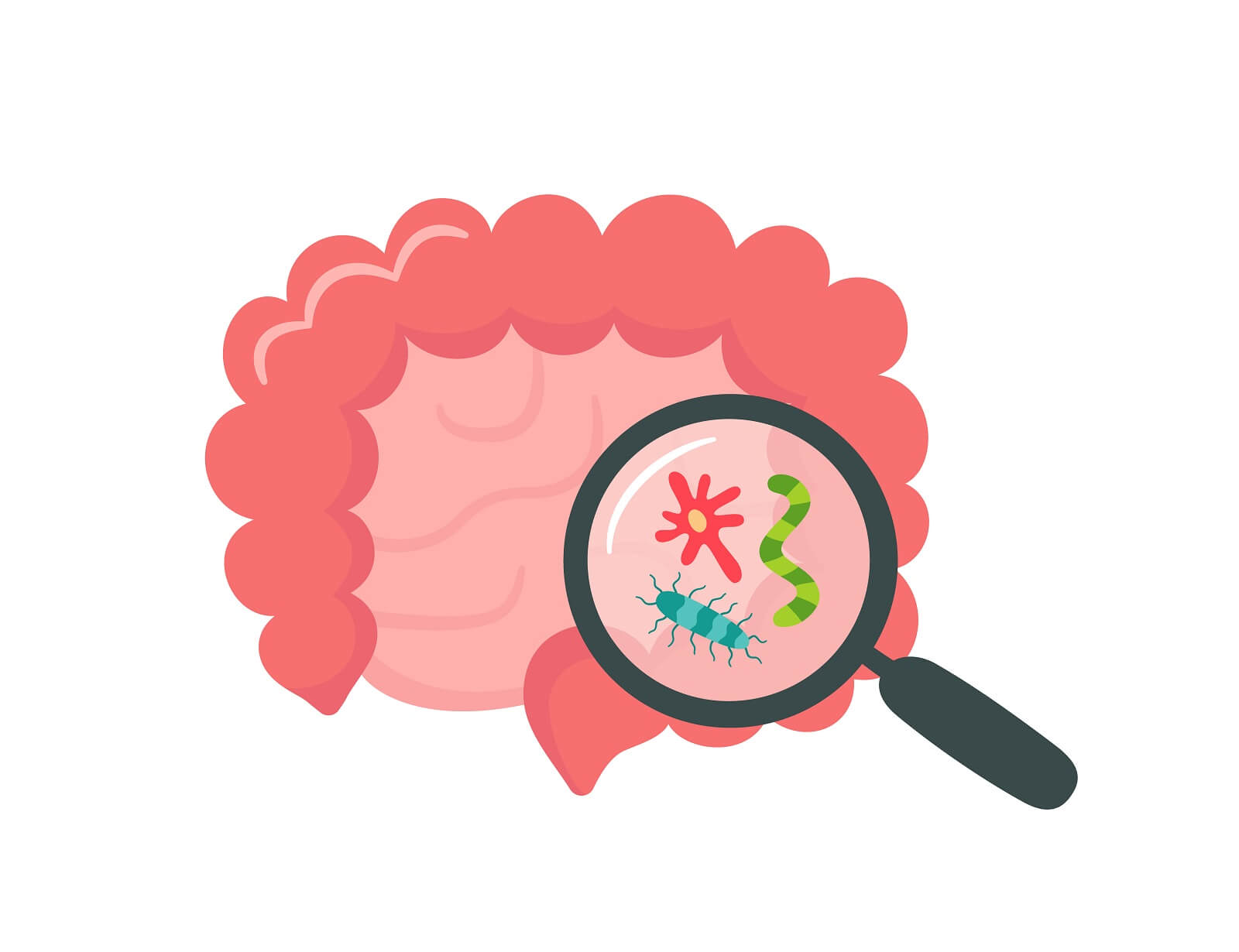See all "Menstruation" Section Topics

Yeast infections may be able to contribute to the cause of menstrual irregularities—such as a missed period. Candida, the yeast organism that causes human infection, contains an estrogen binding receptor protein. This protein is produced by Candida and locks onto estrogen specifically.
A study documenting the presence of an estrogen binding protein was published in the journal Microbiology [1995 Oct;141 ( Pt 10):2685-92]. This protein, is produced in greater abundance by some Candida species; but, all species in the study, did produce the protein. This estrogen binding protein, in Candida, will lock onto and “suck” up estrogen that it comes in contact with.
This estrogen binding protein possessed by Candida, is of importance when it comes to missed periods. Your menstrual flow is dependent upon having enough endometrial tissue to shed during menstruation. And, estrogen helps to signal to the body to start producing more vaginal tissue.
When you lack estrogen, you could have some interference in your period. Thus, since a large amount of Candida can lower the level of estrogen in your body, you may develop irregular periods.
Candida Menstrual Irregularities Research

One prominent researcher, often quoted by Dr. William Crook in his Yeast Connection books, is Dr. C. Orian Truss. Dr. Truss published a study in The Journal of Orthomolecular Psychiatry [10.4 (1981): 228-238] that described the case of a 14 year old girl.
The girl, before her problems began, was a normal, happy, “A” student. Yet, she began to take regimens of antibiotics for acne; and, suddenly, everything changed. She transformed mentally from a successful, happy student, into a girl who could no longer learn; and was severely depressed—often vocalizing her thoughts of suicide. She also suffered from constipation, hives, asthma, and had menstrual irregularities. This girl had 2 periods 10 days apart when Dr. Truss saw her. Dr. Truss states the following about this girl:
One year ago a girl, also 14 years old, was brought in because of mental confusion and sudden inability to learn, associated with severe depression and frequently voiced thoughts of suicide. This condition had begun abruptly five weeks earlier, on the identical day that for the first time in her life she broke out with severe hives and developed severe asthma. The hives were severe every day and in the two weeks prior to her visit asthma had required hospital emergency room treatment three times. She had experienced menstrual periods only ten days apart after two years of normal 28-day cycles.
http://orthomolecular.org/library/jom/1981/pdf/1981-v10n04-p228.pdf
Dr. Truss quickly started her on the antifungal nystatin; and, a low carbohydrate anti-Candida diet. For nine months after first starting her on the anti-Candida treatments, she missed her period. Yet, strong Candida suppression was indicated by the girl’s hives and asthma going away during this nine month period.
Candida in her body was likely affecting her hormones. After nine months of the anti-Candida therapy, prescribed by Dr. Truss, the girl was her normal, happy self again. The girl also began to have normal menstrual cycles again as well. The problem was totally solved by treating her for Candida overgrowth.
One study, published in the Journal of Surgical Research [129.2 (2005): 278-282], demonstrated how Candida albicans possessed a powerful ability to latch on to estrogens; and, become more virulent as a result.
The study found that, Candida albican’s estrogen binding protein receptors, were able to bind with estradiol, estrone, and estriol—three prime forms of estrogen. The rate at which Candida takes on estrogen increases during the first 4 hours it is in contact with the hormone; and, then remains steady thereafter. The study found that rats who were given estrogen had vaginal colonization of Candida albicans 8.6 times as much compared to those rats not given estrogen.
The chart below, was taken from the study, and illustrates the amount of estrogen (in fmols: a billionth of a millionth (10-15) of a mole.) the yeast took on. Please note that the chart indicates estrogen as 3H-estrogen. 3H is a symbol for tritium, which is a hydrogen atom that has one proton and two neutrons. Tritium is radioactive, therefore this may be why this special version of estrogen was used—as you may be able to track the estrogen via the radioactive tritium.

Another study, published in the Journal of Infectious Diseases [147.2 (1983): 359-359], showed that Candida albicans has the ability to bind with progesterone—another major hormone related to the menstrual cycle. The study was not exactly sure of the mechanism Candida albicans employed to take in progesterone; but, speculated it was due to a binding protein. Thus, other species of Candida may also have the ability to suck up progesterone as well. We can therefore conclude, that yeast in your body is likely reducing the amount of progesterone in your blood.
Another study, published in the Journal of Infectious Diseases [181.4 (2000): 1441-1446], also discussed the estrogen sensing and response system of Candida albicans. The study also stated, that, although the exact type of binding protein for estrogen possessed by Candida was currently unknown, this binding protein did exist. And, that when Candida albicans takes in estrogen, through this binding process, the yeast demonstrates increased growth and better survival ability. Therefore, estrogen clearly makes Candida albicans more virulent.
A 1/2 Day & Yeast is Gone!
Linda Allen suffered from yeast infections for years. Through researching natural medicine & Candida, she found an efficacious solution!
Linda is one expert you want on your side! Let her show you how to get rid of a superficial yeast infection in just 12 hours; AND, keep it gone!
A 60-day, 100% money back guarantee is provided.
Visit Official Site!Research Conclusions

As the page yeast infection and period points out, estrogen and progesterone play a significant role in the menstrual cycle. When estrogen and progesterone levels increase during the luteal phase (the phase right after ovulation, before your period) of the menstrual cycle, the vagina begins to build tissue in preparation for a fertilized egg to attach to.
When yeast in your body suck up too much estrogen and progesterone, you will not have this tissue develop fully. In cases of severe Candida overgrowth in the body, the yeast may suck up so much of these sex hormones that hardly any vaginal tissue is grown. Thus, when your time comes to have your period, little or no tissue is discarded by the vagina; and, you have no monthly bleeding. Leaving you to wonder: "what is causing my period to be late?"
The majority of the studies we looked at, regarding Candida’s estrogen binding protein, involved Candida albicans. However, Candida albicans is the most virulent of this yeast genus; and, is responsible for about 80% of all Candida infections (Fidel, et al.; 1999). Thus, Candida albicans is very relevant to the vast majority of women who have yeast overgrowth.
It is very possible that other species of Candida have the same types of binding proteins, and can subsequently alter your menstrual cycle. For more information on the menstrual cycle, and the hormones that play a part in it, check out the aforementioned link to the yeast infection and period article. You may find it quite helpful!
Eliminate Bacterial Vaginosis & Vaginal Odor
Jennifer O’Brien is one prominent expert on BV that knows how to get rid of vaginal odor. BV is a common infection that you don’t have to put up with.
Jennifer will show you how to naturally eliminate vaginal odor in just 3 days.
A 60-day, 100% money back guarantee is provided.
Visit Official Site!Yeast in the Gut
It is logical to speculate, that the interference in your period, is due to more yeast than what is living in your vagina. Candida normally lives commensally in your gut; but, given certain conditions, it will overgrow and become pathogenic. Yeast likely travels from your anus to your vagina to causes a vaginal infection.
If you have suffered from recurrent yeast infections, it is possible that your digestive system is compromised by Candida. Thus, if your digestive system is harboring a large amount of Candida, this yeast can suck up estrogen that travels in your blood.
Candida albicans can do this, as it can grow tendrils (known as hyphae), into the tissue linings of your intestines and vagina. This infected tissue will have some amount of blood passing through it; and, subsequently, the estrogen will be sucked out of the blood.
Killing Digestive System Yeast

One of the safest, and most effective ways to rid your digestive system of yeast is to take antifungal herbs. There are many herbs that you can take to kill candida: garlic, licorice, cinnamon, and grapefruit seed extract are a few. These herbs will kill Candida in the digestive system; and, not carry the hazardous side effects of prescription drugs.
Additionally, you should take a probiotic to help restore helpful bacteria to the digestive system. You can even insert probiotic pills into the vagina to restore probiotic levels directly. It would be prudent to do both. There is a lot of information about probiotics, especially L. acidophilus, on Candida Hub. But, concerning intestinal Candida, perhaps the most comprehensive information is on Candida Hub’s Gut Yeast Infection section.
Clair Goodall: Author & Nature Lover
Clair Goodall is a bee-obsessed natural medicine convert from Minnesota. She is one expert you might want to know more about!
Clair will help you protect you and your family from toxic products and chemicals and help you discover solutions from nature.
Also, Clair’s book is backed by a 60-day, 100% money back guarantee
Visit Official Site!Fast, Natural Yeast Infection Treatment

According to a research paper published in Clinical Microbiology Reviews [12.1 (1999): 80-96], Candida species are quite ubiquitous organisms. Candida are most frequently present in the mouth; and, live in 31% to 55% of healthy people. The species that causes approximately 70% to 80% of all Candida infections is C. albicans.
The Chinese Journal of Obstetrics and Gynecology [2011 Jul;46(7):496] reports there appears to be a correlation between intestinal Candida infections and vaginal yeast infections. And, this provides a clue, as to why yeast infections in general, can reoccur.
This study states, in 148 cases of vaginal candida infections, 33.1% of the women were infected in both the intestines and vaginal area. The recurrence rate of yeast infections, in women with simultaneous intestinal infection, was significantly higher than for women who did not have an intestinal infection. This study concluded that vaginal yeast infections are highly associated with simultaneous intestinal Candida infection.
As research appears to indicate, systemic Candida infections can and do happen. A more systemic Candida infection may primarily get a foothold in the intestines; and cause a wide array of problems. If your yeast infections keep happening, a systemic Candida problem may be why.
One woman who suffered from a systemic Candida infection, for about 12 years, was Linda Allen. The systemic Candida infection that attacked Linda caused a wide range of health problems in addition to yeast infections. Some of these problems, Linda describes in her own words in the following quote:
To be honest, it was hard to pinpoint exactly what was wrong: I wasn’t really sick, but I wasn’t really well either. I had listlessness, fatigue, brain fog, stomach ailments, unexplained rashes, skin infections, and so on. It seemed like every day brought a new challenge.
My energy was sapped and I felt exhausted, which affected my grades and put a big dent in my social life.
Linda Allen’s symptoms included an embarrassing vaginal discharge, severe itching, and burning sensations. Her infections were difficult to deal with, and Linda’s health problems cost her financially as well. Linda states these infections of Candida can become excruciating when they happen as frequently as a menstrual period.
Yet, Linda spent a great deal of time in research; and even questioned health professionals who were kind enough to share some time with her. Linda even tried an array of purported "cures." Although it took a while, eventually, Linda put together a natural treatment plan she hoped would solve her Candida situation.
After spending about a year refining her new approach, Linda tried her system on herself. It worked amazingly well. Linda even returned to a few medical doctors to get tested for the presence of infections. These tests revealed all indicators of infection had vanished! Linda was indeed well again, after such a long, difficult journey.
Linda has since published a book detailing how to copy her success. She also includes a 12 hour yeast infection cure that can get rid of a superficial (such as a genital yeast infection or oral thrush) yeast infection in about 12 hours.
Linda’s publisher protects those who get her book with a 60 day, 100% money back guarantee. Linda’s publisher, a subsidiary of the United States based firm Keynetics Incorporated, is a reputable digital retailer that has been around for a long time. They have great customer service, and make getting a full refund on Linda’s book quick and easy. If you’re not satisfied, you can quickly get all your money back.
If you would like to learn more about Linda’s journey to freedom from Candida, see reviews of others who tried her natural system, or find out more about her efficacious book; you can find more information at Linda Allen’s website.
Author: Mr. Nicholas Gross

Nick Gross is a natural medicine enthusiast who has been researching and writing about natural medicine since 2008. Nick is primarily a web developer but also researches and authors written and video content about natural health. Nick has a bachelor’s degree in Management Information Systems from the University of Northern Iowa.
Disclaimer
The information on this website is not a prescription for anyone. This information is for informational or educational purposes only, and is not a substitute for professional medical advice or consultations with healthcare professionals.
Affiliate Disclosure
Some of the links provided on this website are affiliate links. When a purchase is made through these links, Candida Hub earns money from commission. This helps to keep the website up and helpful to people for free. Thank you for any support!
Stay Up to Date
If you enjoyed this article, consider following / liking our Facebook page. This page is primarily utilized to alert followers of new articles that are put on Candida Hub. Candida related news is also discussed. While you are there, you can see what has been more recently added to Candida Hub.
SOURCES:
- http://dx.doi.org/10.1099/13500872-141-10-2685 — Zhao, Xi, et al. "Oestrogen-binding protein in Candida albicans: antibody development and cellular localization by electron immunocytochemistry."Microbiology 141.10 (1995): 2685-2692. PubMed, PDF Available Here
- Truss, C. Orian. "The role of Candida albicans in human illness." J Orthomol Psychiatry 10.4 (1981): 228-238. PDF Available Here
- http://dx.doi.org/10.1016/j.jss.2005.05.019 — Tarry, W., et al. "Candida albicans: the estrogen target for vaginal colonization." Journal of Surgical Research 129.2 (2005): 278-282. PubMed
- http://dx.doi.org/10.1093/infdis/147.2.359 — Powell, Bernard L., and David J. Drutz. "Confirmation of corticosterone and progesterone binding activity in Candida albicans." Journal of Infectious Diseases 147.2 (1983): 359-359. PubMed
- http://dx.doi.org/10.1086/315406 — Zhang, Xiaoqian, et al. "Estrogen effects on Candida albicans: a potential virulence-regulating mechanism." Journal of Infectious Diseases 181.4 (2000): 1441-1446. PubMed, Full Text Available Here
- http://cmr.asm.org/content/12/1/80.short — Fidel, Paul L., Jose A. Vazquez, and Jack D. Sobel. "Candida glabrata: review of epidemiology, pathogenesis, and clinical disease with comparison toC. albicans." Clinical microbiology reviews 12.1 (1999): 80-96. PubMed Full Text
- https://pubmed.ncbi.nlm.nih.gov/22041440/ -- Lin XL, Li Z, Zuo XL. "Study on the relationship between vaginal and intestinal candida in patients with vulvovaginal candidiasis." Chinese Journal of Obstetrics and Gynecology (Zhonghua fu chan ke za zhi). [2011 Jul;46(7):496].








